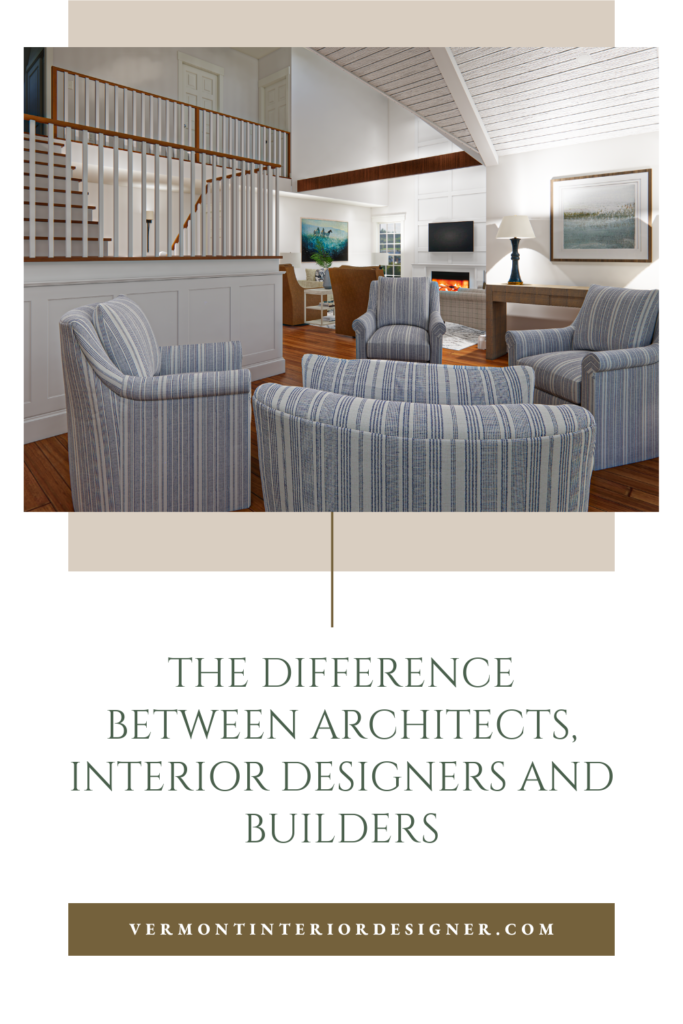Winchester Architect Services to Bring Your Vision to Life
Wiki Article
Designing Your Desire Space: The Influence of Interior Design and Home Engineer on Home Aesthetic Appeals
The magic of developing a dream home exists not just in building prowess yet likewise in the delicate artistry of indoor layout. These two techniques link, with style supplying the skeletal framework while interior layout breathes life right into the room with shade, furniture, and texture choice.The Junction of Interior Design and Architecture: Even More Than Meets the Eye
Although lots of people think that interior layout and design are two different disciplines, a closer assessment discloses a remarkable crossway in between the two. Style lays the foundation, offering the covering within which interior decoration operates. However, the type and function of an area are not entirely dictated by its building format. Interior Design plays a crucial function in finishing a structure and improving's building elements, concentrating on the option and discussion of indoor things such as furniture, fixtures, and finishes. It is the interplay of these two techniques that brings a room to life, changing it from a plain structural entity right into an alternative, lived experience. This cooperative connection highlights the importance of integrating architectural concepts into interior decoration, and vice versa, to achieve a harmonious and cosmetically pleasing environment.Taking advantage of the Power of Colors and Textures in Home Layout
While the structure of a home may be the canvas, it is eventually using colors and structures within interior style that brings the vision to life. The tactical application of shades can establish the mood, produce harmony, and also influence the perceived dimension of a room. Neutral shades lend a sense of calm and spaciousness, while vibrant shades can stimulate and attract emphasis. In a similar way, appearances play a critical role in adding depth and personality to a space. Harsh appearances, like raw timber or block, provide rustic appeal, while smooth surfaces, like marble, radiate elegance. By understanding the psychological effect of shades and tactile charm of appearances, one can successfully transform a home right into a visually compelling and mentally interesting home.
The Role of Furniture in Specifying Room and Way Of Living
Furnishings acts as a defining aspect in indoor layout, influencing both area and way of life. It not only supplies useful energy however additionally contributes to the visual allure of the home. The choice of furnishings can dramatically affect the perception of space, with bigger pieces creating an impact of majesty, while smaller, minimal styles can make a room appear spacious. Furniture acts as a reflection of the property owner's lifestyle and individual taste. A preference for vintage, rustic furniture might show a love for practice, whereas smooth, modern items frequently recommend a modern, metropolitan way of living. Hence, furnishings selection plays a crucial role in specifying and customizing space, with each item serving as a testimony to the house owner's distinct identification. Countryside Homes interior design.
Building Factors To Consider for Personalized Spaces
Beyond the influential duty of furnishings, architectural factors to consider also play an essential component in customizing spaces. The layout, style, and framework of a home can significantly affect its general aesthetic, performance, and the citizens' convenience. Understanding the home's architectural elements, such as the shapes and size of rooms, the placement of doors and windows, and the kind of products made use of, can help one tailor their area to their way of life and choices. In addition, building components like arcs, stairs, columns, and fire places can act as the centerpieces of an area. Balancing these architectural information with appropriate furniture, shade systems, and lighting can develop a unified and individualized atmosphere. Design, therefore, is a vital consider creating one's dream area.The Emotional Impact of Aesthetically Pleasing Spaces
The impact of aesthetically pleasing spaces on human psychology is extensive. These settings not just attract the senses but also contribute to an individual's total well-being. They can boost creativity, cause relaxation, and even affect mood. Patterns, shades, and structures can stimulate psychological reactions, while the layout and lights can influence habits and interactions. A well-designed room, with its mindful equilibrium of visual appeals and functionality, can cultivate a sense of harmony, advertising positivity and efficiency. On the other hand, inadequately made areas can engender sensations of pain or anxiety. For that reason, indoor style and architecture are not just about producing visually enticing areas, however also concerning cultivating atmospheres that boost mental wellness and complete satisfaction.
Conclusion
Finally, developing your desire space is a nuanced process that balances the architectural aspects of style with the visual options of interior decoration. By thoroughly picking colors, structures, and furnishings, you can craft rooms that not only look beautiful but likewise functionally offer your way of living. Ultimately, the successful integration of these disciplines Interior design near me promotes health and wellbeing, stimulates imagination, and fosters a sense of individuality within the Winchester architect home.Creating Your Dream Room: The Influence of Interior Layout and Home Architect on Home Aesthetic Appeals Countryside Homes interior design.
The magic of making a desire home exists not only in building prowess but likewise in the fragile creativity of interior design. These 2 techniques link, with architecture supplying the skeletal framework while indoor style takes a breath life right into the room with appearance, furnishings, and color option.Furnishings serves as a specifying aspect in indoor design, influencing both room and way of life.In final thought, producing your dream room is a nuanced process that balances the structural click here components of style with the visual choices of indoor layout.
Report this wiki page